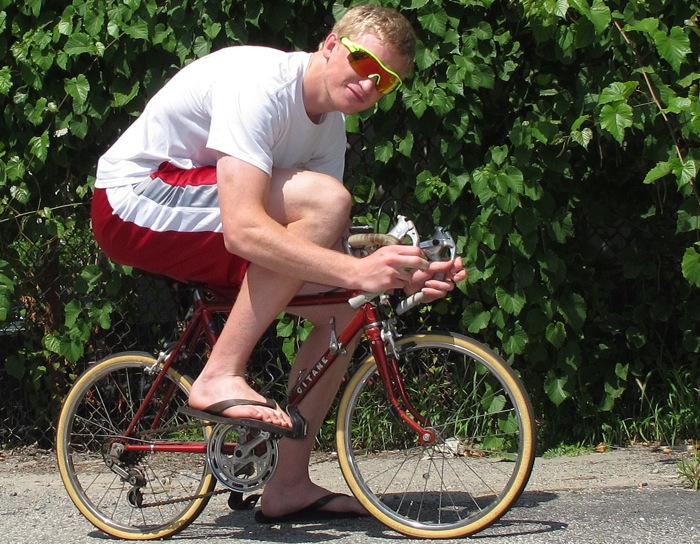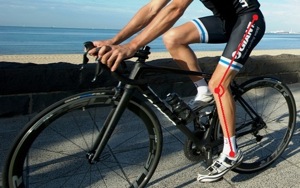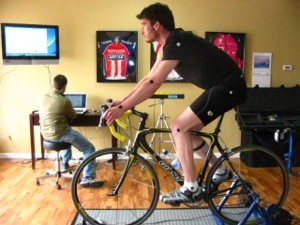
Bike setup is pretty high on the list of priorities when it comes to buying a new road bike, so most cyclists would have discussed the topic at some point on their rides. But what does a proper bike fit entail, and what are the benefits? Surely you can do most of it yourself at home...Well believe it or not, you can, albeit to a pretty low standard. It will take a visit to your local shop to truly make the most of your bike fitting and the associated performance and comfort.
WHAT ARE THE DIFFERENCES
The difference between a DIY bike fitting and a professional shop bike fitting is quality. Although you may be able to do a good job yourself at home, most people just don't have the equipment and knowledge to perform a bike fit to the highest of standards.
Your local bike shop on the other hand, does have the tools and the know-how. The benefit in getting someone else to perform a bike fit for you is that they can make adjustments to your bike while you ride it meaning you can feel the changes as you go...
Bike shops have really stepped up to the plate when it comes to investing in staff training and even specialized equipment for their bike fitting. In fact, a bike fit has even become a major selling point when your local bike shop offers their services to you. So when you do visit your local store, rest easy knowing they've spent a small fortune in time and money to train their staff in bike fitting - they know their game!
But before you shoot down to your local bike shop (LBS for those in the know) let's have a closer look at what actually gets done during a bike fitting. This information is generalized, so keep in mind that each store might have different methods in achieving the same result.
BIKE FITTING
Assuming you have selected the correct frame size for your bike, you're now onto the actual bike fitting itself. Your bike will normally be put into an indoor trainer, which by the way, is awesome for winter training or rainy days. Once your bike is in the trainer, you'll be told to get onto your bike and start riding.
SEAT HEIGHT

Your seat height is usually priority number one, so your LBS will take a few measurements to ensure your leg is extended to around 85-90% of its full extension. Bike shops will have a special tool to do this, or even a computer program with live video feed of you riding. Measurements are performed on screen instead of on you...
DID YOU KNOW? There are many different ways to find the correct saddle height at home. First step is to measure your inseam by placing a thick spined book between your legs (as if it was a saddle) and stand flat-footed against a wall. Mark the top edge of the book on the wall and measure the vertical distance. Multiply this number by 88.3%. This number is the distance from the centre of the bottom bracket to the top of your saddle. The best home method though, is measuring the angle of your knee joint, (at the bottom of the natural pedal stroke), to 25-35 degrees. The benefit of this is it negates variations, (we are all different), in femur and tibia length.
SEAT SETBACK
The next part of your bike fitting is usually your seat setback, meaning how far your seat is positioned aft of your bottom bracket / crankset. Correct seat setback allows you to pedal more effectively and increases your power output through maximising your leg extension. Seat setback also allows you to push the pedals away from you, as opposed to pedalling directly over your pedals - this again increases power and riding comfort.
DID YOU KNOW? The old trick is to use a plumb bob, (string with a weight on the end), to drop a line from the front of your knee down to line up with the pedal axle. Do this while sitting in a natural pedalling position with the cranks level. Adjust your saddle fore and aft till aligned.
HANDLEBAR HEIGHT

Handlebar height is a slightly more 'user input' adjustment whereby the rider can voice their preferences in handlebar height. The reason? handlebar height directly affects the angle of your back.
Cyclists with back problems or spinal fusions may request a higher handlebar height, while racing enthusiasts will want to go lower than you'd like to imagine! The lower your handlebars, the more aerodynamic you are - but be careful that you don't trade off aero for comfort.
STEM LENGTH
The stem connects the handlebars to the bike, and it can come in varied lengths. This is to suit riders with longer arms, or the need to stretch forward more to suit their positioning preferences. An average stem length is between 70-90mm, with extremes ranging out to 140mm. If you're doing your own bike fit, be careful in choosing an overly long stem. Excessive forward stretch causes you to lean forward onto more sensitive soft tissue in your groin, which can cause discomfort at very least.

TIP: Ask your LBS to check your cleat alignment on your shoes - it's all part of a good bike fitting and should never be overlooked.
A few other options can now be considered to maximize your comfort. For example, you may want to change seats, especially if your seat setback or handlebar height has been altered. The reason for this is any changes that tilt your pelvis forwards or backwards may put pressure on different areas of your anatomy. Finding a seat that alleviates this pressure will make your ride so much more comfortable. Ask your local bike shop what they recommend as far as a seat is concerned.
As you can see, there are key areas in which your bike fit will focus on. If you've never had a bike fit performed, always have it done by a professional. The discomfort involved in getting it wrong can ruin any ride, so get it done right and enjoy your next long ride. If you have any concerns as to your physical limitations, be sure to mention this when getting fitted to your bike.
Get fitted, and get out there and ride! You'll thank us later...


